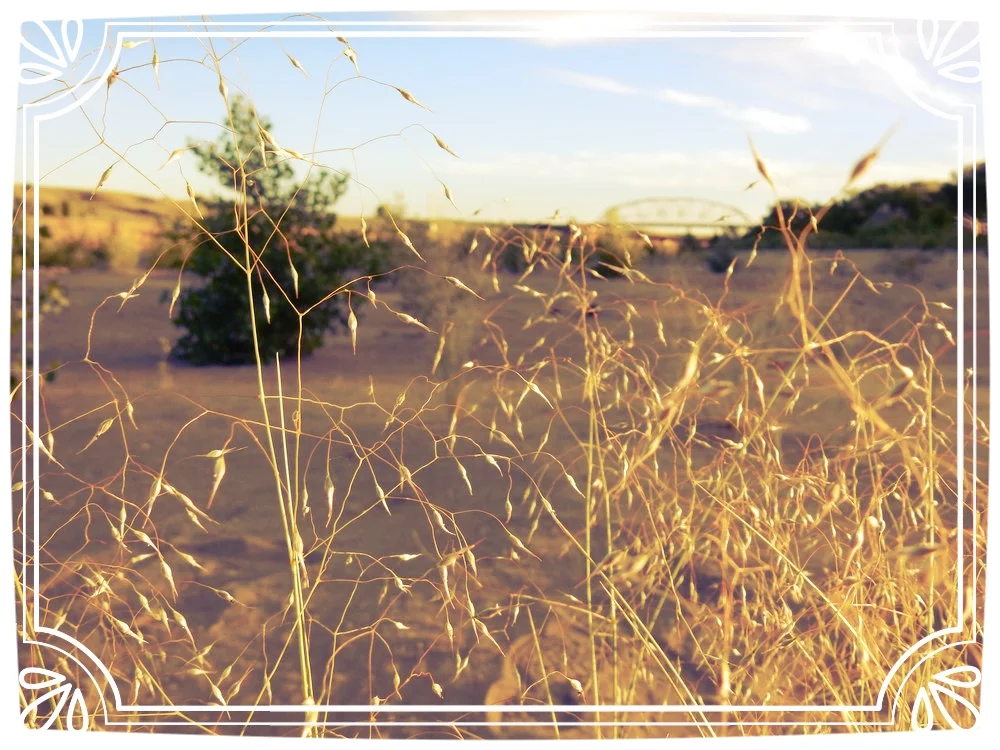Ricegrass: A Native Dry-Land Rice for Dumplings, Bread, and Tortilla-Making
Achnatherum hymenoides (Rom. & Schult.) Barkworth
This photo, taken by Matt Lavin, was retrieved under Creative Commons licensure from here.
Synonyms
Oryzopsis hymenoides (Roem. & Schult.) Ricker, Eriocoma cuspidata Nutt., Eriocoma hymenoides Rydb., Oryzopsis cuspidata Benth., Stipa hymenoides Roem. & Schult.
Family — Poaceae
Family Characteristics — Poacea family members are grasses (monocots) with jointed flower stems.
Aliases — Indian Millet, Sand Bunch Grass, Mountain Grass, Mountain Rice, Indian Ricegrass
Binomial Etymology — All components being derived from Greek, Achna- refers to a chaff, and -therium (notably not -therum) refers to a wild beast; hymen- suggests a membrane and -oides suggests "like" [1]. It is therefore likely this binomial is referring to the chaff of ricegrass being membrane-like.
Binomial Pronunciation: — Ache-nah-THere-um ~ high-men-oi-dees
USDA Classification — Native
USDA Symbol: ACHY
With a telescopic eye to the past, you can practically see the timeline of Achnatherum hymenoides' use as a food disappear into the gloaming light of the written word and plunge straight into the blackness of prehistory. That is to say, North Americans have been using these seeds as a staple food source for a lllllllllllllllllllllllong time.
With consideration to this context, we can be sure that an intrepid millionaire— with a stunning ponytail— will on day slap the terms "gluten free" and "ancient grain" (both claims being 100% true) on to a few zillion artfully designed bags of these seeds.
Until then, we can exclusively find these seeds hovering on delicate panicels above the prairies and deserts of western North America. If you are interested in making the rarest dumplings, porridge, bread, and tortillas on Earth, perhaps you should consider growing this dry land grass near you.
To consume this grain, is to savor an experiential communion with humanity's ancients.
Welcome to the gluten-less and ancient-grainy world of Ricegrass: it's bound to make a ponytailed entrepreneur a gazzilion-point-five dollars one day.
This photo, taken by Matt Lavin, was retrieved under Creative Commons licensure from here.
Description
Grass descriptions are— necessarily— jargon rich. Terms not often encountered in colloquial English have been defined or tagged with a hyperlink. The description (below) was derived from a highly recommended book, Grasses of Colorado, by Robert B. Shaw [4].
The INFLORESCENCE, the feature of interest, presents as an 5-20 cm long open panicle. Branches present in pairs, while the branchlets (the newest/smallest components of branching) exhibit a noticeable degree of waviness, and divide into two at the axis (the area where the branchlets meet the main stem). The branchlets spread widely, and terminate with clearly noticeable spikelets that have more-or-less equally sized pedicles. The single-flowered spikelets are relatively large [4].
A. hymenoides grows in dense clusters, and the hollow culms (stems that present the inflorescence) tend to range from 30 cm (approximately 1 ft) to 90 cm (approximately 3 ft) tall and are free from hairs. The leaf sheaths are either hair-free or barely covered in a downy hair, open (wrap around and overlap at the margins), and become papery/fibrous with advanced age.
The ligules taper to points but can become torn and irregular with age. The leaf blades are curved inwards (convolute) [4].
Habitat
This drought tolerant grass has a widely varied habitat preference and can range from subalpine areas, all the way down to clay soils occurring in the desert [4].
Image retrieved from the USDA website accessible through this link.
Culinary Uses and Ethnobotany
The APACHE, GOSIUTE, HAVASUPAI, HOPI, KAWAIISU, MONTNA, NAVAJO, PAIUTE, and ZUNI Native American tribes have all been documented to use A. hymenoides as a food source for themselves and their livestock.
Notably, the APACHE (as well as the NAVAJO) used the seeds of ricegrass to make bread, and mixed its seed with cornmeal to create a porridge; the HAVASUPAI — who also used the seeds to create a porridge — would grind the parched seeds into a fine flour that was boiled and reduced to a thickness desired to make dumplings [3]. In addition to porridge, the HOPI would make ricegrass tortillas (this fact made me hungry) [3]. The PAIUTE used the seeds to make sauce and flour, and the ZUNI used the seeds to create "steamed balls" [3].
Miscellaneous
Rodents in the Heteromyidae family (kangaroo rats, pocket mice. etc.), have been show to increase ricegrass' germination and long term survival by caching the seeds in multiple locations [5]. Ricegrass was briefly marketed as Montina. Also, it has been said that A. hymenoides is a great dry-land substitute for baby's breath in xeric landscaping.
Pull Up Your Plants! (PUYP) is now receiving visits from all over the world. Please take the time to leave a comment or subscribe below. I’d like to hear about your experiences with …
For source citations, please email Kevin Healey at
pullupyourplants. @ gmail.com
With Love,
Kevin.






